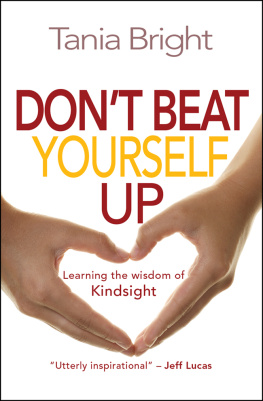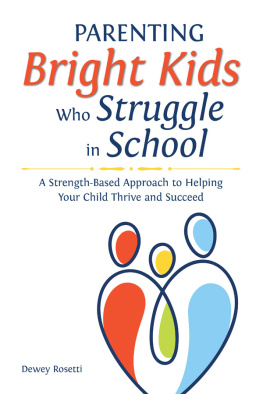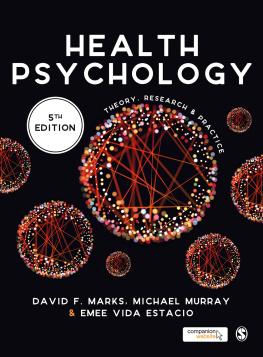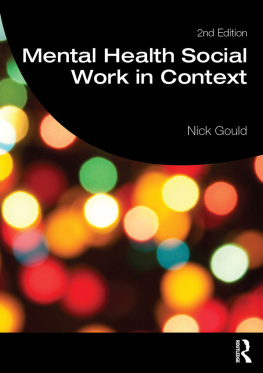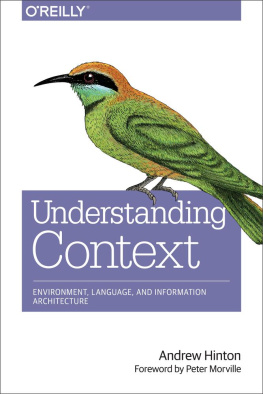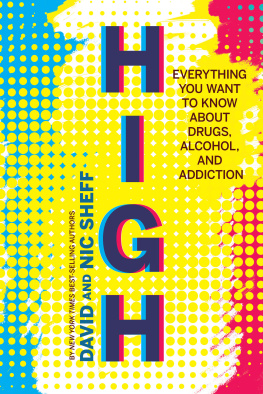
Copyright 2022 by Cognella, Inc. All rights reserved. No part of this publication may be reprinted, reproduced, transmitted, or utilized in any form or by any electronic, mechanical, or other means, now known or hereafter invented, including photocopying, microfilming, and recording, or in any information retrieval system without the written permission of Cognella, Inc.
Trademark Notice: Product or corporate names may be trademarks or registered trademarks, and are used only for identification and explanation without intent to infringe.
Cover image: Copyright 2018 iStockphoto LP/Arsgera.
Printed in the United States of America.
Cover design by Emely Villavicencio

chapter one
It Began on an Island
T he idea for this book dawned on me while I was on my honeymoon in Marco Island, Florida. Admittedly, plotting out a book probably wasnt the best use of my mental energy at the time. With endless sunshine and pristine gulf coast beaches, I should have been relaxing and soaking in every enjoyable moment with my wife. Still, as I sat on a chair and stared out a window (the glow of the sun and the soft lapping of the turquoise water tempting me to go on another beach walk), an intriguing thought came to mind.
My wife and I were staying at a high-end beach resort, the glitz, glamor, and quality higher than anything I could have ever imagined. I was born into generational poverty, raised in a true middle-of-nowhere rural area, and only a few years prior had taken my first professional job in Vermont. Id driven to my new home with eighty dollars in my bank account and an air mattress in the back seat. That major leap was the beginning of the journey that had led me to this point. And where was I now?
Out of place, perhaps? No, that wasnt quite right, but the people spending time at this resort seemed to come from backgrounds I had rarely encountered and barely understood. My wife and I could only afford this exclusive retreat due to her saving up years worth of hotel points. She traveled frequently for work and had strategized this long before our wedding details were set. I reflected on how I ended up in this position. It felt surreal, as if it were a dream. After a life marred by tragedy, instability, and periods of depression, how could I end up here?
How could two seemingly separate worlds merge into one?
As I pondered this, I noticed a child. My observation was the type that often leaves as quickly as it comes, a blip on the radar so small it isnt even noted. This time, however, the backdrop of my reflective thoughts provided the perfect adhesive for it to stick. I observed a young boy, perhaps seven years of age, hopping up and down trying to get the attention of his parents, who were lounged back in their chairs outside, each enjoying an early-morning cocktail.
I thought how bizarre this resort must seem for children. Here were adults wasting their time sitting around, drinking, some of the single adults flirting at tiki bars, all of their time spent on leisure, when there was just so much fun to be had. There were multiple pools, an arcade, an entire ocean to play inand here were these adults, adhering to strange social conventions, floating around in a constant semi-buzzed state, caught up in things that didnt matter.
I smiled, reflecting on the way I thought of adults when I was a kid. I remember how I thought they missed opportunities, prioritized the mundane, and stressed over the trivial. Then I flipped the switch, thinking about how children must appear to the adults on the resort. Hyper, overly emotional, unobservant, and unaware of economic realities. There were undoubtedly countless moments when the parents were left shaking their heads at the behavior and outlook of their children. It's just how parenting goes.
This is when the thought for the book hit me.
Here were two groups of people, in an objective sense experiencing the exact same environment and situation, coming away with thoughts and impressions that were completely different. What was causing such a different interpretation of the resort and each other? As a counselor by training, I felt it came down to one answer.
Context is everything.
As a child, I agreed with those kids who rolled their eyes at the adults relaxing for another five minutes before getting to the next activity. As an adult, I understand the necessity of downtime, relaxation, and the occasional early-morning cocktail. I am the same person, but the reality of my life situation, my experiences, my context is radically different.
Ive earned a PhD in counselor education, and I work as an assistant professor of counseling. Ive previously worked as a school, career, and mental health counselor across several institutions. Im constantly interacting with individual context. The root of my job is to understand the wants, needs, environment, and worldview of individuals to help them process, grow, and find solutions. Ive learned the value and power of context through these experiences, as well as just how prevalent it is in every interaction in our lives.
This book will be informed by a counseling perspective and by research in the field. These provide evidence-based backing to some of my thoughts and perspectives on context and on how, by better understanding and identifying these things, we all can live happier, healthier lives. But this is not an academic book destined to be riddled with jargon. Instead, Im using my training, education, and experiences to provide insight and tangible action steps for just about everyone.
I will use plenty of real-world examples, modifying identifiers of the individuals to protect confidentiality. We will actually begin with a story, one that Ive utilized with students to exemplify what I mean when I talk about the nature of context and the validity of individual realities.
I was working as a school counselor in a school in rural New Hampshire. It was a place where history had a different meaning, a deeper meaning, as just about every family in the district could trace their family lineage through the squat, boxy school buildingthe entire structure the size of a cafeteria in a large urban school. The building sat on a dirt road, adjacent to farmland, just a speck beneath the watchful gaze of the mountains, with natural beauty encompassing this relic and symbol of the community.
I was the first school counselor theyd had in five years. This elementary school had a population of about 115 students. Despite the limited number of students, needs were high, with approximately 75% of the students qualifying for free or reduced lunch, 50% having an academic or emotional support plan requiring some type of counseling, and in my estimation, about 40% of students having experienced some form of severe trauma. These figures changed the reality of that school. They altered the context, which then modified the nature of my job and how I responded to student needs. This all came together on the day in which I helped Anna.
Anna was a student in one of our lower grades. Shed had a difficult history, experiencing past trauma, neglect, and severe abuse, which all impacted her daily emotions and general functioning in school. While she was bright and cheery on a good day, her smile, charm, and sense of humor would disappear in an instant given the right trigger.
I was called into her classroom one day to assist with a situation. I walked in to see the teacher, who was a strong professional and cared about her students, in a confrontation with Anna, who was hiding under a table in a corner. Anna was crying and would respond to her teacher only by shouting, No! or letting out a piercing shriek. The teacher repeatedly said that if this behavior continued, there would be consequences, as per the class rules. The teacher was calm but clearly becoming exasperated, as shed been trying to reach Anna for about ten minutes prior to me arriving. The teacher explained that she had simply reminded Anna of a class rule. When corrected, Anna became hostile and defensive, causing the teacher to ask Anna to take a time out. Upon this reprimand, Anna had an emotional meltdown, screaming, crying, and hiding in the corner. The teacher had relied on social structure and rules to try to reach Anna. If Anna would not come out, she would have to visit the principal and her mother would have to be called. I assured the teacher she could tend to the rest of her students while I worked with Anna.
Next page


